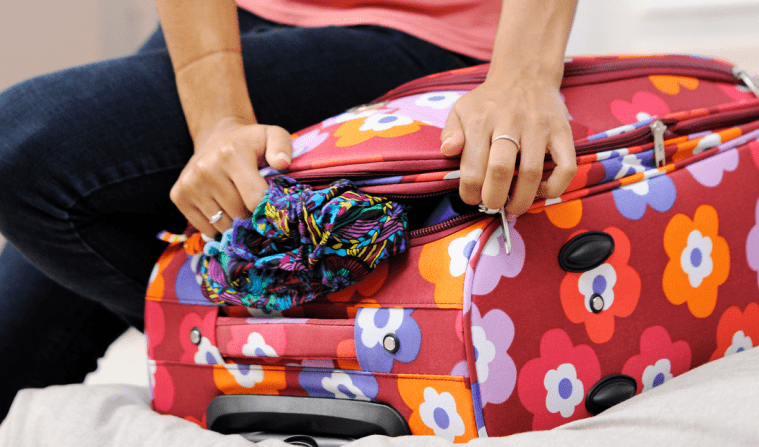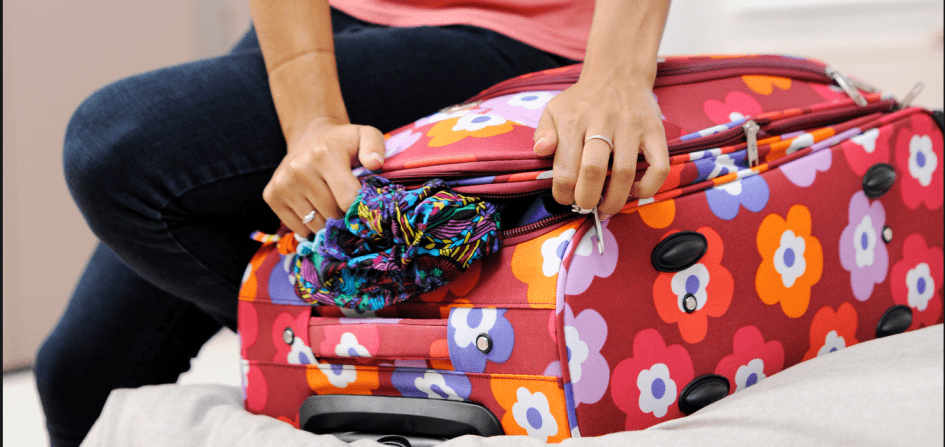One of the best pieces of advice I could give travelers heading on a long-term trip is to watch what they pack. I thought I did an admirable job on my six-week solo trip, only to feel that I wanted to throw out 30% of my suitcase on days when I was lugging my 20kg bag up vertical inclines and staircases with 5 inches of space on each step.
The following article from Hipmunk’s Tailwind Blog, who I have partnered with to share some advice that I think my readers would find useful, gives excellent packing tips for long-term travel. So read ahead!
No one would prefer lugging four suitcases through the airport over picking up a backpack and whistling past the baggage claim. But that doesn’t mean packing light is an easy feat. Develop a strategy for packing light, and you’re much more likely to actually do it in spite of anxieties.
Whether your goal is to pack for a multi-week vacation in a carry-on or you’re just looking to lighten the load and develop better packing habits, here’s how to pack light for any trip.
Embrace multi-functionalism
Why pack two (or more) items when it’s possible to pack one item that accomplishes everything the others would. Think two-in-one shampoo/conditioner, smartphones (they’re a camera, flashlight, GPS, and phone all in one), a small bundle of strong, flexible rope (use it to tie things to a pack, string it up as a clothesline, or tie the bag to the roof of a bus), or a tablet that can be converted into a laptop. While packing, consider all the ways (conventional or not) that each item could be used. Pack as many multi-functional items as possible, and don’t double up—if one item could serve a particular function in a pinch, that’ll do.
Follow the “rule of three”
When it comes to clothing, three pairs of socks, three pairs of underwear, and three shirts should take care of the basics. That way you can wear one, wash one, and dry one all at the same time. Because pants and shorts get smelly less quickly, two pairs will probably do it. Choose clothing in neutral shades so that any of the items can be paired with the others, and opt for fabrics that aren’t prone to wrinkling.
Think light
Evaluate everything on a packing list to see if there are light-weight versions of any items. For example, consider packing a Camelbak bladder instead of a stainless steel water bottle. And instead of packing a heavy winter coat for a cold climate, pack light-weight thermals and thin sweaters (One exception: If you’re staying in an ice hotel, bring the heaviest coat you’ve got). You’ll stay warm either way but the latter will take up way less room in a suitcase. Opt for the lighter version whenever possible.
Be willing to wash
Committing to washing your clothes while traveling will save a ton of weight, because you won’t need to pack fresh outfits for every day of the trip. A sink plug and a little soap is generally all it takes to get clothes clean on the road.
Make a “don’t-pack” list
When it comes to packing light, what you don’t pack is just as important as what you do. Leave behind jewelry and other valuables, items that can be purchased at a destination, multiple guidebooks (or multiple books in general), unnecessary electronics, excess toiletries, and most of the items you feel inclined to stuff into the bag in a last-minute panic. Also be sure to adhere to any regulations for liquids, etc., in order to spend less time in airport security.
Pack several days in advance
This affords time to assess everything you’ve planned to pack. A day or two after laying out all your gear, re-evaluate whether each item is essential. If you’re justifying taking an item with the phrase “what if…” that may be a sign that it’s not actually necessary. Packing in advance will also leave time to pack in an organized way, with heavier items toward the bottom of the pack, clothing rolled instead of folded, and the gear you’ll need most often in accessible places.
Packing light is a skill made better with practice, and it gets easier every time it’s done (especially after a few trips prove that things don’t fall to pieces without all those “what if” items). Put these tactics into practice every time you pack for a trip, and pretty soon you’ll be a pro at packing light.
This post was posted by thehipmunk on Hipmunk’s Tailwind Blog on August 25, 2015.


